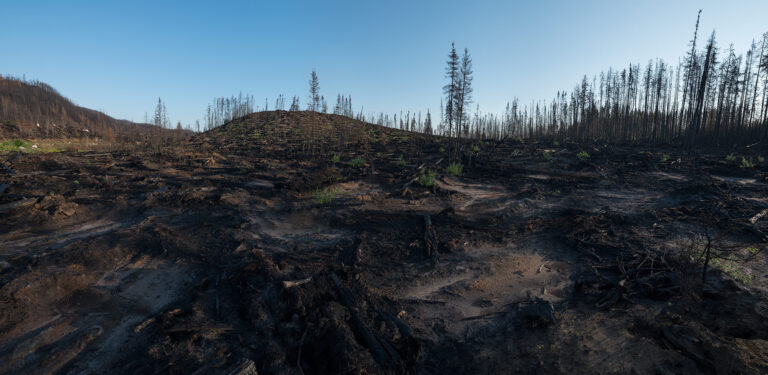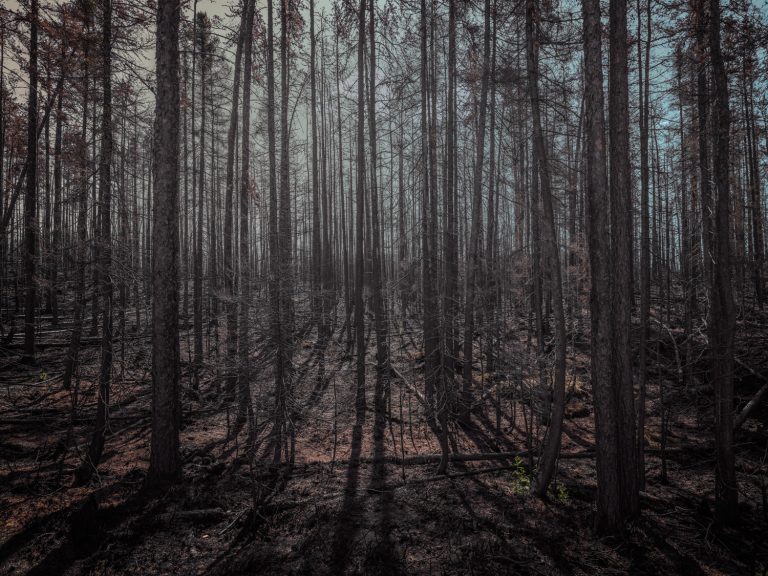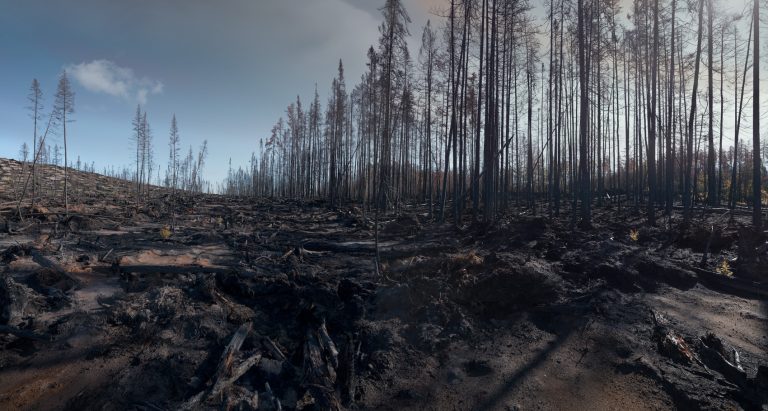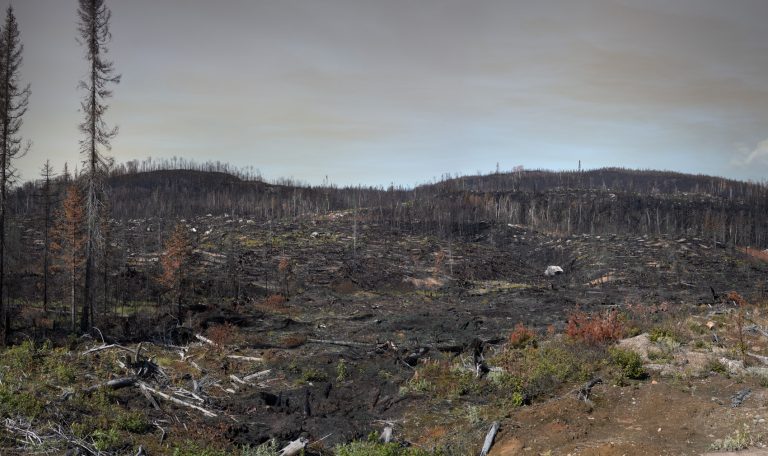Land of Ashes
Terres de cendres
2020 – 2021
Terres de cendres
2020 – 2021
In June 2020, a massive inferno raged north of Lac Saint-Jean (Québec) decimating 72,000 hectares of the boreal forest in Zec des Passes, a controlled harvesting zone. This controlled zone is riddled with timber harvesting areas and access roads; tracked harvesters have left scars everywhere. The fire reduced what was left of these altered landscapes to ashes and the land was now completely devastated. I took along the rough gravel roads leading to this unorganized territory and picked my way through some of these blackened desert moonscapes.
Fire is a normal part of forest life, but when it hits hard in forests that have not yet achieved the maturity required to regenerate, it takes hundreds of years to re-establish the original plant cover. New forest plantings are comprised of young trees that do not produce many seeds and that represent only a few species destined for the lumber industry. These areas suffer from severe ecological poverty: plantings can never replace what nature took centuries to create.
Forests cover one third of the earth’s land surface, but this proportion continues to shrink. Since the advent of agriculture, about 11,000 years ago, we have chopped down more than half our forests. Every year, worldwide, between 13 and 15 million hectares of forest disappears. Intact primary forests offer habitat for countless lifeforms; they are essential to maintaining biological processes and ecological balance.
FRANÇAIS
En juin 2020, un important brasier fait rage au nord du lac Saint-Jean (Québec) : il décimera 72 000 hectares de forêt boréale. Je parcours les rudes chemins de gravier qui mènent à la région touchée, un territoire non organisé situé dans la Zec des Passes. Dans cette zone d’exploitation contrôlée, les coupes forestières et les routes d’accès sont nombreuses; les abatteuses sur chenilles ont laissé des cicatrices partout. L’incendie a réduit en cendres ce qui restait des paysages altérés et ces terrains sont maintenant complètement désolés. J’observe ces déserts noircis, aux sols lunaires.
Le feu fait partie du cours normal des choses dans la vie sylvestre, mais lorsqu’il détériore des forêts qui n’ont pas atteint la maturité nécessaire pour se régénérer, il faut alors des centaines d’années pour renouveler la richesse initiale du couvert végétal. Quant aux nouvelles plantations, elles produisent de jeunes arbres qui ne disséminent pas suffisamment de graines et elles ne se composent que de quelques essences destinées à l’industrie; sur le plan écologique, elles présentent donc une grande pauvreté. De fait, le reboisement ne remplace jamais ce que la nature a mis des siècles à créer.
Les forêts couvrent un tiers de la surface terrestre, mais actuellement cette proportion ne cesse de diminuer. Depuis le début de l’agriculture, il y a environ 11000 ans, nous avons coupé plus de la moitié du massif sylvain. Chaque année, à l’échelle mondiale, entre 13 et 15 millions d’hectares boisés disparaissent. Les forêts primaires, non dégradées, s’avèrent essentielles au maintien des processus biologiques et de l’équilibre écologique, car elles fournissent un habitat à d’innombrables formes de vie.








